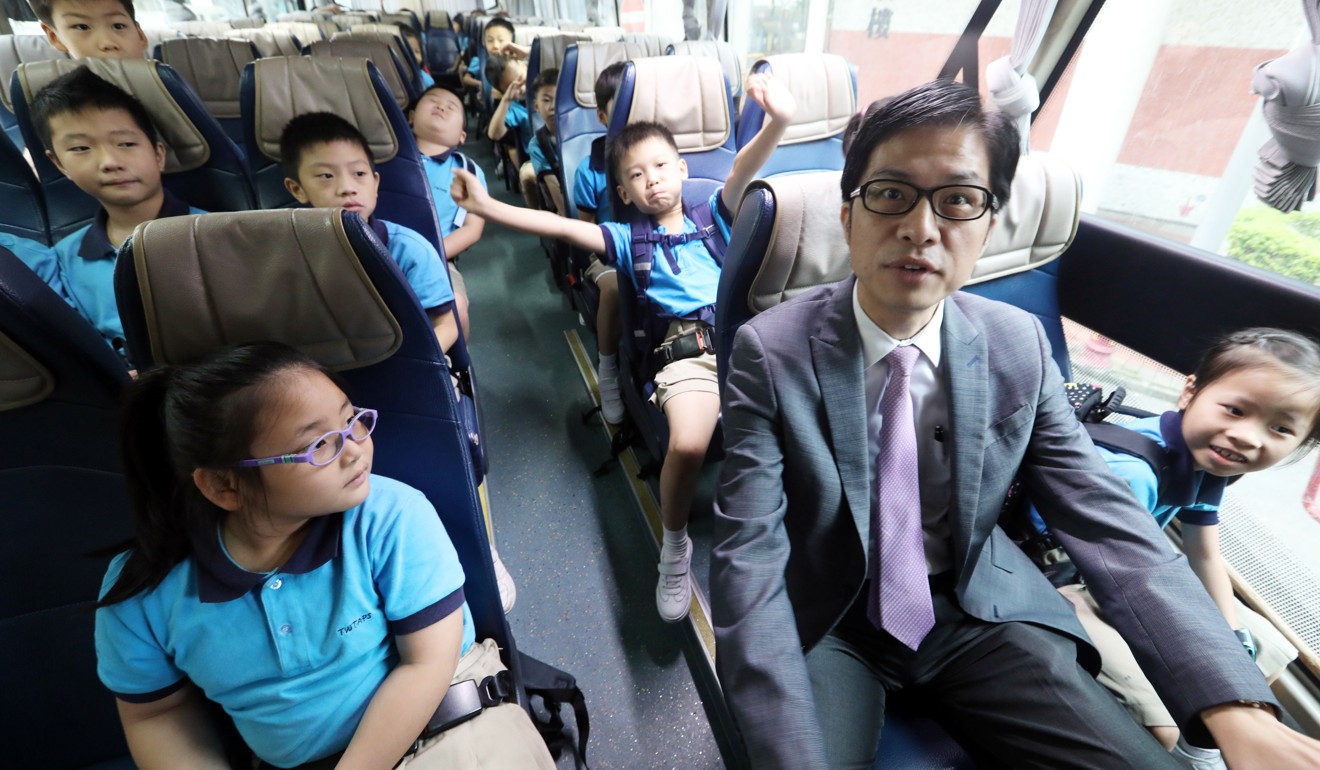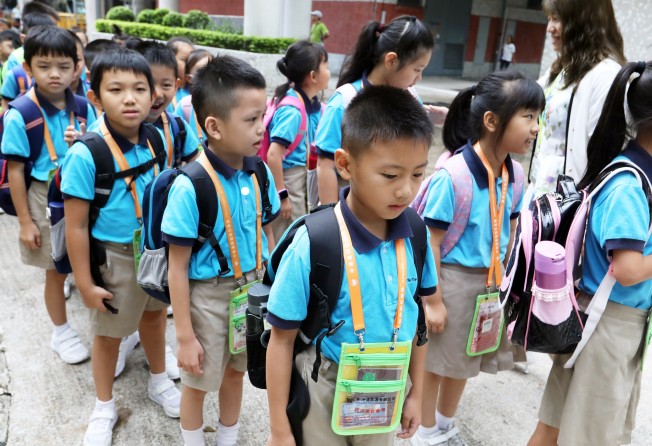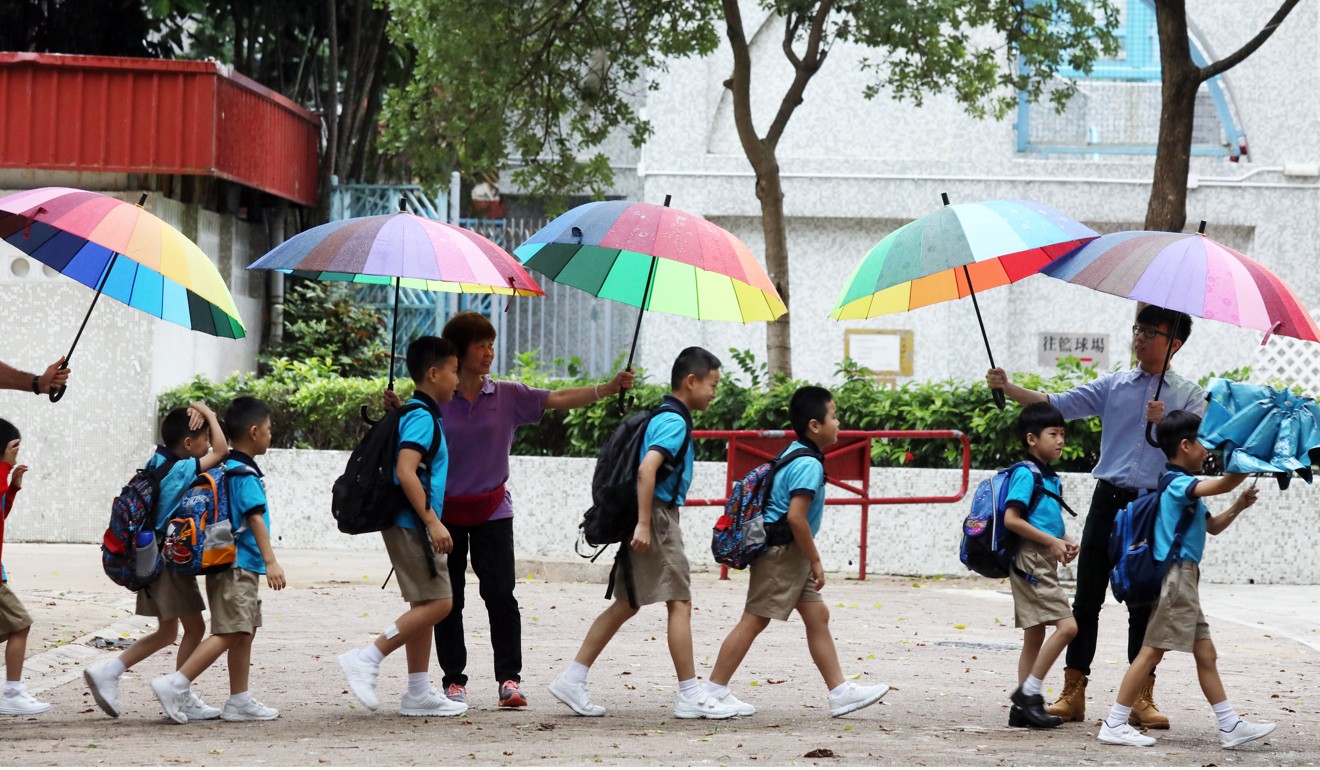
Back to school in Hong Kong for tens of thousands but number of mainland Chinese pupils crossing border expected to fall off
The 2013 ban on mainland women giving birth in city set to affect number of cross-border pupils from next year but a principal says his school has already seen decrease

The air was abuzz with excitement as about 100 new pupils showed up at Tsuen Wan Trade Association Primary School in Hong Kong on a cloudy Monday morning.
About 70 of them had come from Shenzhen, across the border in mainland China, likely waking up by 6.30am or earlier to get on the bus at 7am, before travelling for an hour to the school in Tsing Yi.
They were among the more than 60,000 Primary One pupils who started school in Hong Kong on Monday, after a summer break of about two months.
Over the past few years the bulk of Tsuen Wan Trade Association Primary School’s Primary One cohort has been pupils living across the border from Hong Kong.

But all this is expected to change next year, as in 2013, the city’s government began prohibiting hospitals from taking in mainland women to give birth.
Between 2001 and 2012, more than 202,000 children were born to mainland mothers whose spouses were not Hong Kong permanent residents.
But their children, by virtue of being born in Hong Kong, automatically became permanent residents and could receive free education at local schools. It resulted in intense competition for primary school places, especially in institutions close to the border with the mainland.
This year, 32,171 children took part in the city’s Central Allocation for Primary One Admission. Among them, 22,486 were granted one of their first three choices – a success rate of 69.9 per cent – according to the Education Bureau. That was higher than last year’s three-year low of 67.6 per cent.
Under the admission system, parents can apply to a public or government-aided school at the discretionary stage, and be offered a place based on a points system. If the children are not admitted, they go through central allocation.
Chow Kim-ho, principal of Tsuen Wan Trade Association Primary School, said he had seen a decrease in cross-border pupils since April last year, “but this year the effect is much stronger”.
In April last year, Shenzhen authorities said children born in Hong Kong to mainland parents could apply to public primary schools there, even if their registered household address was not on the mainland.

Last September, 190 Primary One pupils began at the Tsing Yi school, with 100 of them from the mainland.
Gan Run Ai, who lives 30 minutes away by bus and whose two children are at the school, said it was “not a bad thing” to have mainland pupils at school.
“It’s actually good for the kids’ communication skills since there are both mainlanders and Hongkongers. Kids can learn both Cantonese and Mandarin,” she said.
But Chow said he was not too concerned by the drop in pupils. When he first joined the school four years ago, there were only about 10 Primary One pupils and all were ethnic minority children, he said.
In recent years, the school has been promoting its English language classroom environment and focus on science, technology, engineering and maths education.
Chow’s school, unlike others where the medium of instruction is wholly Chinese, teaches some mathematics and general studies lessons in English. This has been welcomed by parents, Chow said, as youngsters will need to use English more often as they move on to higher education.
“In my school, I want to have better matching with secondary schools,” he added.
As for STEM education, the school sets aside one hour a week and through the course of the year, teachers will conduct experiments and run coding classes, but also teach pupils life skills such as money management, cooking and how to use computer software to build presentation slides, among other things.